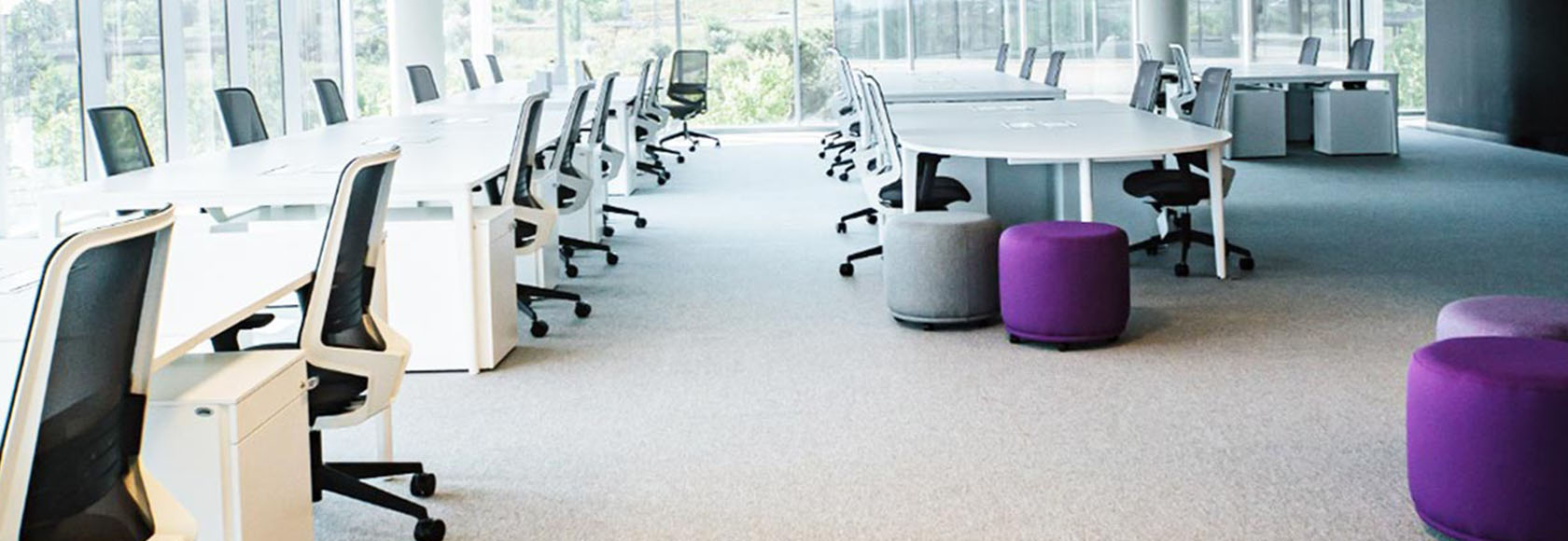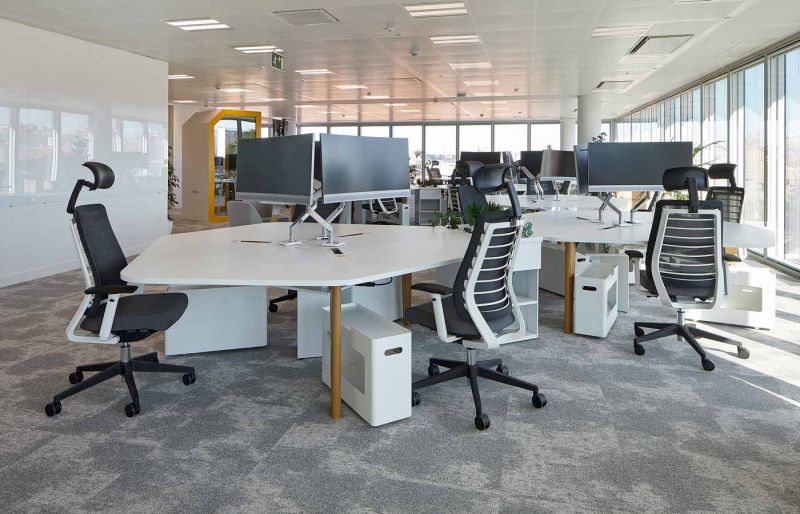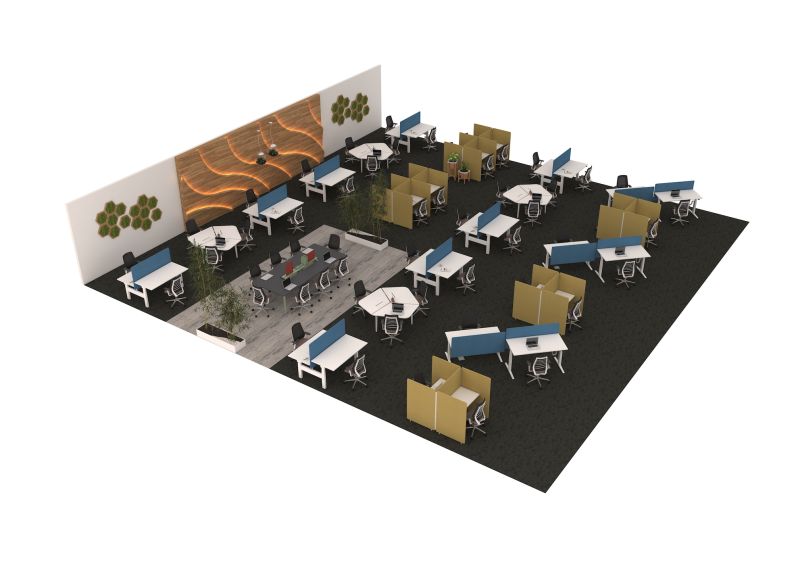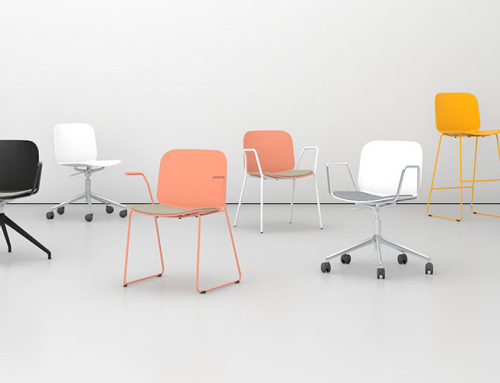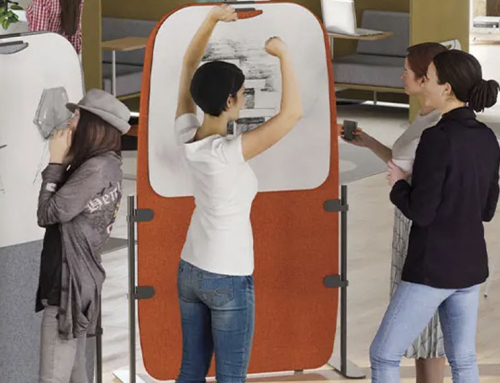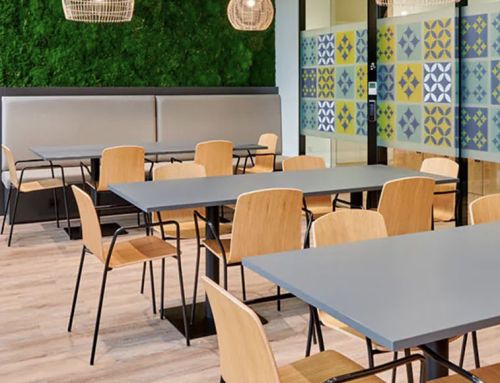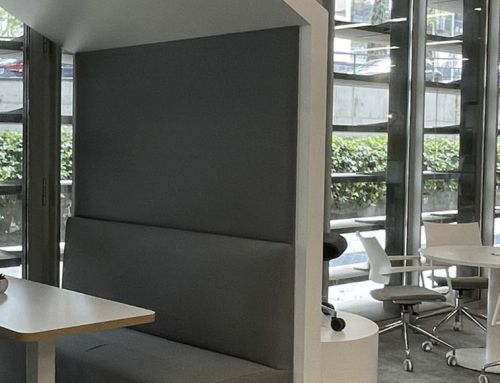Operative workstations as we know them, disappearing from the new offices? Does it still make sense for each employee to keep his job when he no longer comes to the office on a daily basis?
In the new offices we will see – in fact, we are already seeing – less common work spaces and many more areas that foster social relationships, innovation and engagement with the organization. Even before the pandemic, we spent 60% of our working day meeting or collaborating with others.
Do new trends question the role of operative workstation?
There are four clear trends in the new office design, which advance the future of workstations: non-territoriality (especially for two types of workers), the absolute prominence of collaborative and social areas, with different types of spaces, the flexibility / versatility of spaces and their equipment, and the humanization of work environments.
This means that we have gone from a model in which each employee is assigned a fixed work space – the typical desk with the family photo and our memories -, to another in which the same workstation is used by different people at different times.
A part of the savings achieved by eliminating personally assigned workstations is increasingly reinvested in an increase in leisure and relaxation areas and alternative spaces for work and communication, each designed for a type of work or specific work dynamics.
We leave behind the allocation of positions for each person and also the concept of “one space for all”. The key to effectiveness lies in having different spaces so that workers can choose where they want to work depending on the activity they are carrying out.
Workstations in the neighborhood office
When thinking about the new offices, at Ofita we visualize a neighborhood concept, of a city, with its neighbourhoods, leisure areas, squares, parks, library, avenues and private homes. And, above all, a neighborhood that lives around its people, designed with their well-being in mind. A neighborhood in which we seek to socialize with others, but in which we always find our most private refuge.
Now, in this neighborhood, do all the assigned workstations disappear? The answer is that this allocation will depend on the type of worker.
Three types of workers in the office
At Ofita we differentiate between three types of workers in the office: its inhabitants (they spend most of their time at their workplace), the guests (they go to the office frequently for specific tasks that cannot be done remotely, and when they come to it , move around the different spaces depending on the task at hand) and digital nomads (they rarely use the office, they only go to the workplace to exchange information and attend meetings).
Workstations, one of the 12 scenarios of the new offices
Therefore, the area where the jobs are located is the natural ecosystem of the inhabitants of the city and also of the guests, even if they only occupy it a few days a week.
This office space, with the workstations, must be comfortable and functional so that professionals carry out their activity in the best physical, productive and emotional conditions.
Three factors will prevail in its design: the user’s need for privacy and/or communication with their colleagues, access to the technology they need and the ergonomics of the workstation since the user spends a large part of their day in this position.

In this sense, height-adjustable desks and office chairs that adapt to the complexion and activity of the user are becoming increasingly important.
The inhabitants can have assigned desks if necessary. In contrast, guest workers, who are only in the office 2-3 days per week, can do so from non-territorial areas for better space optimization.
We recommend that you also include meeting and informal areas next to the workstations, which facilitate their collaboration at specific times, avoiding displacement.
The workstation area is one of the 12 scenarios that we can see in the new offices as defined in the Ofita ebook “3×4=12, the formula for new workspaces”.
You can download it here: Download ebook.
